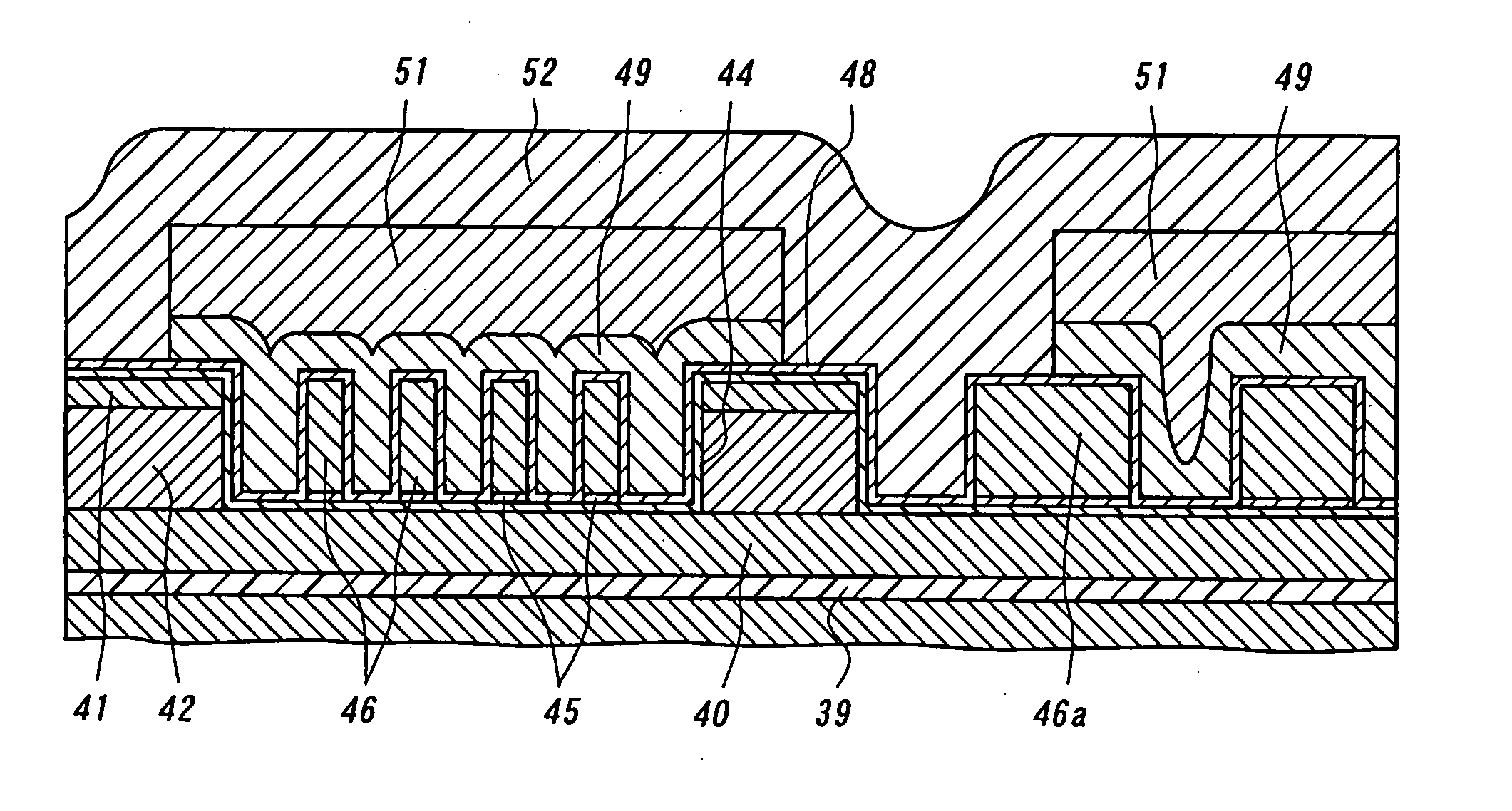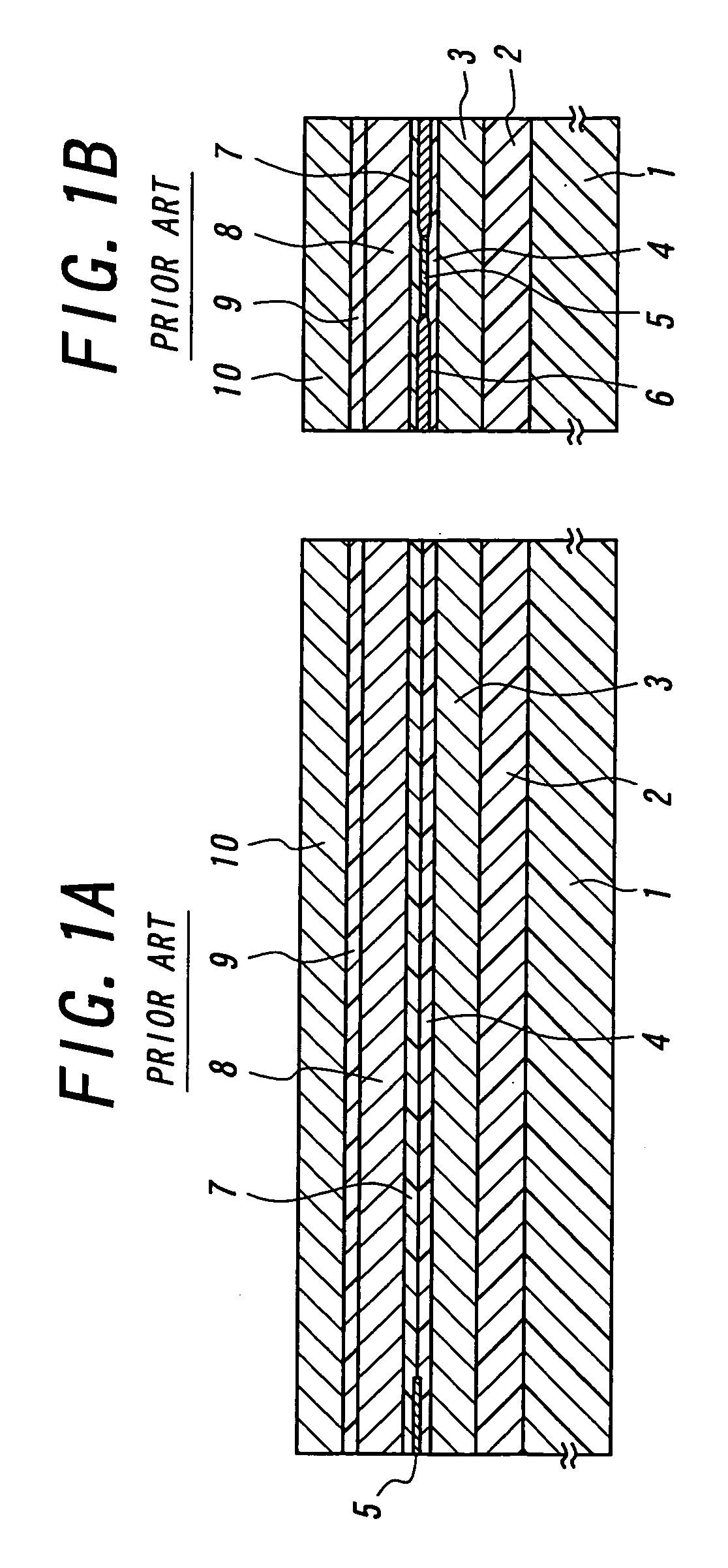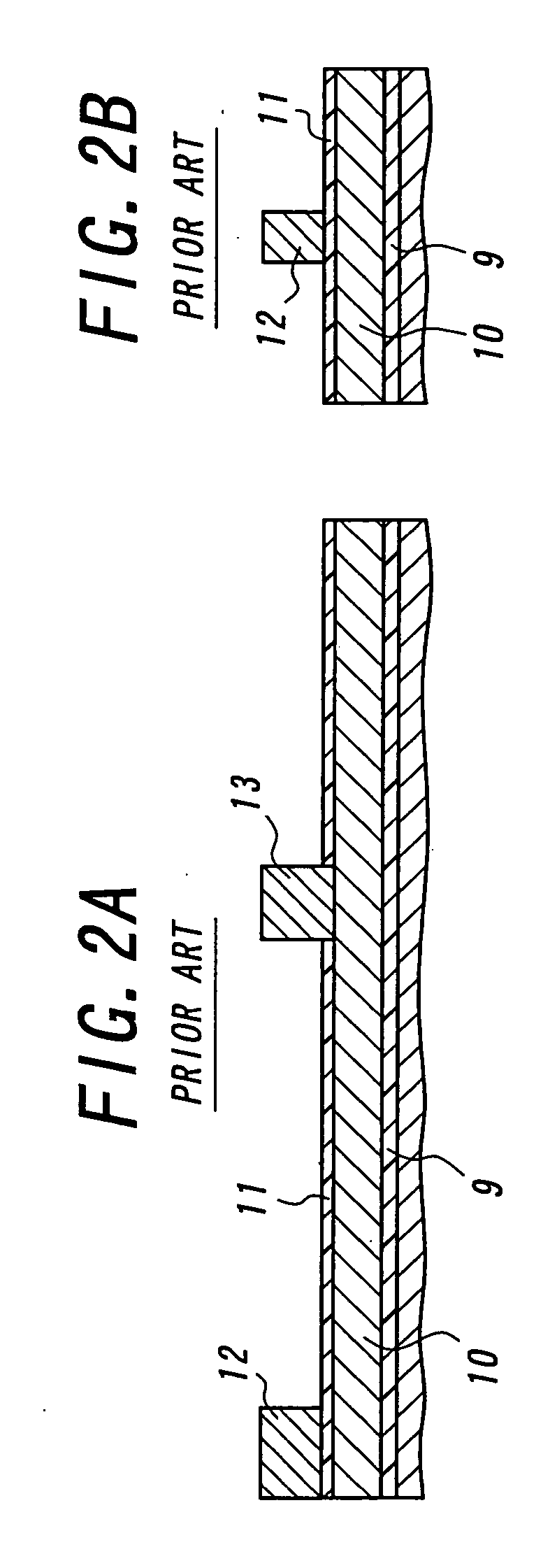Wiring pattern and method of manufacturing the same and thin film magnetic head and method of manufacturing the same
a manufacturing method and wiring pattern technology, applied in the direction of metal sheet head, superimposed coating process, instruments, etc., can solve the problems of insufficiently large magnetic flux, inability to form submicron pattern precisely, and inability to generate sufficient magnetic flux for recording stably, etc., to avoid deterioration of magnetic materials, excellent electrical insulation property, and superior step-coverage
- Summary
- Abstract
- Description
- Claims
- Application Information
AI Technical Summary
Benefits of technology
Problems solved by technology
Method used
Image
Examples
Embodiment Construction
[0119]FIGS. 10-22 are cross sectional and plan views showing successive steps of the method of manufacturing a first embodiment of the combination type thin film magnetic head according to the invention. In these drawings, A denotes a cross sectional view cut along a line perpendicular to the air bearing surface, and B represents a cross sectional view of a pole portion cut along a line parallel to the air bearing surface. It should be noted that the structure of a reading GMR head element formed by a magnetoresistive type thin film magnetic head and the method of manufacturing the same are substantially identical with those of the known head. As illustrated in FIGS. 10A and 10B, an insulating film 32 made of alumina and having a thickness of about 3 μm is deposited on one surface of a substrate 31 made of AlTiC. Furthermore, a bottom shield film 33 made of a permalloy for the magnetoresistive type thin film magnetic head is formed on the insulating film with a thickness of about 2-...
PUM
| Property | Measurement | Unit |
|---|---|---|
| temperature | aaaaa | aaaaa |
| saturation magnetic flux density | aaaaa | aaaaa |
| saturation magnetic flux density | aaaaa | aaaaa |
Abstract
Description
Claims
Application Information
 Login to View More
Login to View More - R&D
- Intellectual Property
- Life Sciences
- Materials
- Tech Scout
- Unparalleled Data Quality
- Higher Quality Content
- 60% Fewer Hallucinations
Browse by: Latest US Patents, China's latest patents, Technical Efficacy Thesaurus, Application Domain, Technology Topic, Popular Technical Reports.
© 2025 PatSnap. All rights reserved.Legal|Privacy policy|Modern Slavery Act Transparency Statement|Sitemap|About US| Contact US: help@patsnap.com



